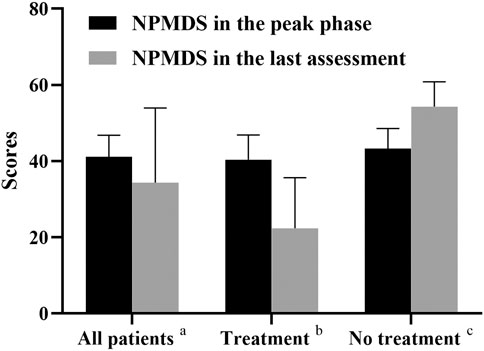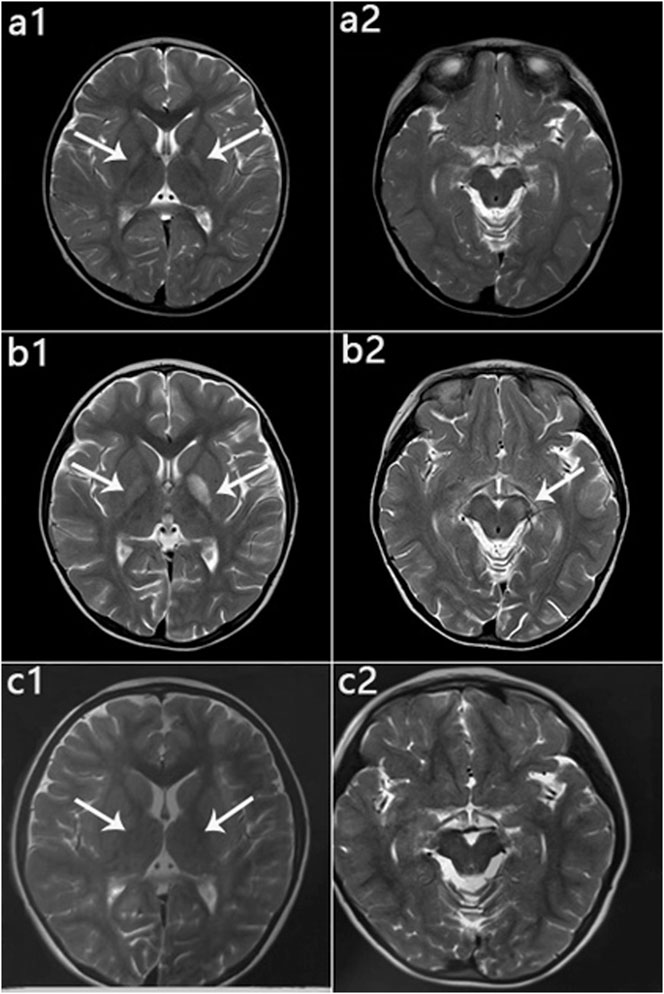Cinical, Metabolic, and Genetic Analysis and Follow-Up of Eight Patients With HIBCH Mutations Presenting With Leigh/Leigh-Like Syndrome
- 1Department of Neurology, Beijing Children’s Hospital, Capital Medical University, National Center for Children’s Health, Beijing, China
- 2Department of Research, Development of MILS International, Ishikawa, Japan
A corrigendum on
Cinical, Metabolic, and Genetic Analysis and Follow-Up of Eight Patients With HIBCH Mutations Presenting With Leigh/Leigh-Like Syndrome
by Wang J., Liu Z., Xu M., Han X., Ren C., Yang X., Zhang C., Fang F. (2021). Front. Pharmacol. 12:605803. doi:10.3389/fphar.2021.605803
In the original article, there was a mistake in the legend for Figure 3 as published. The word “23HD2MB” in the last sentence of the legend was misspelled, and it should be “23DH2MB.”
Furthermore, there was a mistake in the positions of Figures 5, 6 as published. The positions of Figures 5, 6 are misplaced, and they should be interchanged. The corrected Figures 5, 6 appear below.

FIGURE 5. NPMDS scores in the peak phase and last assessment. a, All the recruited patients (n = 8); b, Patients who received therapy (Patient 1, 5, 6, 7, 8; n = 5); c, Patients who gave up therapy (Patient 2, 3, 4; n = 3).

FIGURE 6. Patient 1: MRI performance in the peak and recovery phases. (a1, a2): Initial MRI obtained at age 2 years; hyperintensity on T2WI in the globus pallidus (a1), normal cerebral peduncle (a2). (b1, b2): MRI performed at 4 years 5 months during the acute stage; hyperintensity on T2WI in the globus pallidus with swelling on the left side (b1) and in the left cerebral peduncle (b2). (c1, c2): MRI performed at 6 years 1 month during the recovery stage; only slightly hyperintensity on T2WI in globus pallidus (c1), and Abnormal signal disappeared in the cerebral peduncle (c2).
The reference for “Charng et al., 2016” was incorrectly written as “Charng, W., Karaca, E., Akdemir, Z. C., Gambin, T., Atik, M. M., Gu, S., et al. (2016). A phenotypically severe, biochemically “silent” case of HIBCH deficiency in a newborn diagnosed by rapid whole exome sequencing and enzymatic testing. Am. J. Med. Genet. 182 (4), 780–784. 10.1002/ajmg.a.61498.” It should be “Charng, W., Karaca, E., Akdemir, Z. C., Gambin, T., Atik, M. M., Gu, S., et al. (2016). Exome sequencing in mostly consanguineous Arab families with neurologic disease provides a high potential molecular diagnosis rate. BMC Med. Genomics 9 (1), 42. 10.1186/s12920-016-0208-3.”
Additionally, there was a mistake in Table 2 as published. The forms of the first row of Table 2 were incorrectly shifted to the left as a whole. The corrected Table 2 appears below.
The authors apologize for this error and state that this does not change the scientific conclusions of the article in any way. The original article has been updated.
Keywords: HIBCH gene, Leigh/Leigh-like syndrome, C4-OH, 2,3-dihydroxy-2-methylbutyrate, mitochondrial disorders, children
Citation: Wang J, Liu Z, Xu M, Han X, Ren C, Yang X, Zhang C and Fang F (2021) Corrigendum: Cinical, Metabolic, and Genetic Analysis and Follow-Up of Eight Patients With HIBCH Mutations Presenting With Leigh/Leigh-Like Syndrome. Front. Pharmacol. 12:686933. doi: 10.3389/fphar.2021.686933
Received: 28 March 2021; Accepted: 27 May 2021;
Published: 10 June 2021.
Edited and reviewed by:
Ruth Roberts, ApconiX, United KingdomCopyright © 2021 Wang, Liu, Xu, Han, Ren, Yang, Zhang and Fang. This is an open-access article distributed under the terms of the Creative Commons Attribution License (CC BY). The use, distribution or reproduction in other forums is permitted, provided the original author(s) and the copyright owner(s) are credited and that the original publication in this journal is cited, in accordance with accepted academic practice. No use, distribution or reproduction is permitted which does not comply with these terms.
*Correspondence: Fang Fang, ZmFuZ2ZhbmdAYmNoLmNvbS5jbg==
 Junling Wang
Junling Wang Zhimei Liu
Zhimei Liu Manting Xu
Manting Xu Xiaodi Han
Xiaodi Han Changhong Ren
Changhong Ren Xinying Yang
Xinying Yang Chunhua Zhang
Chunhua Zhang Fang Fang
Fang Fang